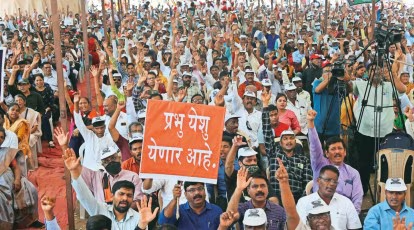Prosenjit Chatterjee Issues Clarification Amid Mumbai Press Meet Controversy
In the vast landscape of Indian cinema, Prosenjit Chatterjee remains a towering figure—revered across generations for his versatility, longevity, and charismatic screen presence. While the veteran Bengali actor has often stayed clear of controversy throughout his decades-long career, his recent appearance at a Mumbai press meet has unexpectedly placed him at the center of a media maelstrom.
The controversy stems from a promotional event that took place in Mumbai in early July 2025, where Chatterjee was present to support an upcoming cross-regional project. What was expected to be a routine interaction with the press quickly escalated into confusion, criticism, and speculation—compelling the actor to issue a formal public clarification just days later.
In this ten-part article series, we’ll dissect the incident, unpack the nature of the controversy, analyze the media response, and explore its broader implications for celebrity culture, communication ethics, and regional cinema’s interface with Bollywood.
The Setting: A Cross-Industry Promotional Event in Mumbai
The press meet in question was organized by the producers of “Sutradhar”—a high-profile bilingual film co-produced by Bengali and Hindi cinema production houses. The film brings together talents from both industries, with Chatterjee playing a lead role alongside a younger Bollywood actor.
The Mumbai event was designed as a showcase to introduce the cast, reveal the trailer, and answer questions about the film’s themes and creative vision. The guest list featured stars, producers, journalists, and influencers—a blend typical of modern, hybrid film promotions aimed at maximizing pan-India reach.
At the heart of the event was a simple intention: to generate buzz. But as the cameras started rolling, things didn’t go quite as planned.
What Went Wrong: Confusion, Cultural Clash, or Miscommunication?
While initial media coverage remained celebratory, videos later surfaced on social media that showed Prosenjit Chatterjee apparently walking off stage abruptly during a question-and-answer session. In the clips, Chatterjee appears visibly uncomfortable or dismissive, with some outlets claiming he had been “disrespected,” while others argued that he had shown “arrogance” by allegedly refusing to answer a journalist’s question.
The incident, though brief, spiraled into a narrative that gathered momentum on digital platforms. Hashtags like #ProsenjitWalkout and #PressMeetDrama began trending on X (formerly Twitter), drawing polarized reactions:
- Some accused the actor of being dismissive and arrogant
- Others defended him, suggesting he had been treated unfairly in a setting that prioritized Bollywood stars over regional icons
- A few pointed fingers at the event organizers for mismanaging schedules and protocol
What followed was a digital trial, led by viral speculation and armchair analysis. Within 24 hours, the matter had snowballed beyond the confines of the event itself.
The Actor Responds: A Clarification to Calm the Storm
On July 10, 2025, Chatterjee issued a carefully worded statement on his official social media channels, addressing the growing controversy. The statement read:
“It has come to my attention that my brief absence from the stage during the press interaction at the Sutradhar event has been misinterpreted. I hold the media in the highest regard and value every opportunity to engage with audiences across India. My exit was not intended to disrespect anyone. It was due to an unforeseen scheduling conflict that had been communicated in advance. I request everyone to see this in context and avoid unnecessary assumptions.”
The clarification was professional, calm, and devoid of confrontation—a tone that many within the industry welcomed. However, it also raised deeper questions about how media spectacles are shaped, and how quickly narratives can spin out of control when nuance is lost.
The Fragility of Public Perception: How One Moment Alters Legacy
For an actor like Prosenjit, who has earned near-universal respect through his decades in cinema, it is telling how even one misunderstood moment can place his public image under scrutiny. This controversy reveals a larger truth about the fragility of celebrity reputations in the social media age, where a single clip—devoid of full context—can rewrite years of goodwill.
Media trials, algorithm-driven virality, and performative outrage often blur the line between genuine accountability and manufactured controversy. Even when the original issue is minor, the perception damage can be swift, harsh, and long-lasting.
In Chatterjee’s case, while most responses to his clarification have been supportive, a section of the media continues to analyze his “body language,” “tone,” and “attitude” at the event—proof that in today’s media climate, apology or context doesn’t always neutralize narrative momentum.
Understanding the Press Meet Ecosystem: Bollywood and Regional Hierarchies
At the core of this controversy lies a more systemic issue—the silent hierarchy that often exists at cross-industry events. Regional icons, no matter how celebrated in their own states, are sometimes treated as secondary at Bollywood-dominated platforms. Seating arrangements, speaking time, and question preferences may subtly reflect this imbalance.
Multiple journalists present at the Sutradhar event reported that:
- Hindi film actors were prioritized for media interactions
- Bengali-language questions were limited, despite the film being bilingual
- There was confusion regarding who would address which sections of the media
If Chatterjee’s discomfort was rooted in this disparity, it opens a legitimate conversation about how regional talents are integrated—or tokenized—at mainstream events. While the industry speaks of “pan-India” cinema, the execution often mirrors old hierarchies.
A Moment That Demands More Than Just Clarification
What the Prosenjit Chatterjee press meet controversy reveals is not just the volatility of celebrity discourse—but also the urgent need for empathy, professionalism, and structural change in how we conduct public events and interpret public behavior.
The incident may have begun as a miscommunication, but it has now expanded into a mirror reflecting deeper tensions: between Bollywood and regional industries, between media speed and truth, and between respect and spectacle.
To understand the intensity of reactions surrounding the recent Mumbai press meet controversy, one must first understand who Prosenjit Chatterjee is—not just in Bengali cinema, but in the larger fabric of Indian cinematic history. His name carries the weight of legacy, cultural memory, and artistic transformation. Any public misinterpretation or criticism directed at him isn’t simply personal—it’s also a reflection of how Indian society engages with its regional icons, its cultural hierarchies, and its cinematic heritage.
In this part, we trace Chatterjee’s remarkable journey through decades of storytelling, transformation, and relentless reinvention.
The Inheritance: Born Into Cinema, Raised by Craft
Born on September 30, 1962, Prosenjit Chatterjee is the son of legendary actor Biswajit Chatterjee, a prominent face in both Bengali and Hindi films during the golden era. While the lineage opened doors, Prosenjit’s path was far from smooth. In an industry where nepotism doesn’t guarantee endurance, he had to earn his stature through performance, persistence, and personal evolution.
He made his first screen appearance as a child actor in Hrishikesh Mukherjee’s Chotto Jigyasa (1968), but it was in the mid-1980s that he began shaping his career in earnest. With Amar Sangi (1987), Prosenjit became a romantic hero and household name, launching what would become one of the most prolific filmographies in Indian regional cinema.
Dominating Bengali Mainstream: The 1990s and Early 2000s
The 1990s belonged to Prosenjit in a way that few actors experience. He was omnipresent—delivering hits year after year, sometimes starring in 10 to 15 films annually. His name became synonymous with Bengali commercial cinema, much like Rajinikanth in Tamil Nadu or Chiranjeevi in Andhra Pradesh.
These were formulaic, audience-driven narratives—romance, action, melodrama. Films like Pathbhola, Sasurbari Zindabad, Sangharsha, and Sundar Bou might not have won international acclaim, but they connected deeply with local audiences. His star power was not just visible on posters—it was imprinted on the cultural psyche of West Bengal.
And yet, this period was also marked by criticism. Some cinephiles accused the industry of being stuck in mediocrity. But what they often ignored was that Prosenjit was not only carrying the industry’s commercial responsibilities but was single-handedly sustaining its box-office pulse in the face of poor infrastructure and limited budgets.
The Pivot: Reinvention Through Parallel and Art-House Cinema
The turning point in Prosenjit’s career came in the early 2000s, when he made a conscious decision to transition from mass-market dominance to critically acclaimed roles. This was a risk few stars of his stature were willing to take, but Chatterjee embraced the challenge.
His role in Rituparno Ghosh’s Chokher Bali (2003) opposite Aishwarya Rai was a revelation. In this period drama based on Rabindranath Tagore’s novella, Chatterjee showcased an emotional depth and nuance that left even his critics stunned. He went on to collaborate with Ghosh in several more films including Dosar (2006), where he played a grieving husband entangled in moral ambiguity.
This phase earned him national recognition:
- National Film Award (Special Mention) for Dosar
- BFJA (Bengal Film Journalists’ Association) Awards multiple times
- Film festival acclaim in New York, London, and Cairo
- Reappraisal in media as a “thinking actor” and “cultural ambassador of Bengal”
This duality—commercial anchor and artistic risk-taker—cemented his place not just in the entertainment industry but also in India’s evolving narrative of cinema as both business and art.
A Bridge Between Eras and Generations
Unlike many of his contemporaries, Prosenjit has remained relevant across four decades, working with both veteran filmmakers and modern directors. He has starred alongside emerging talents and played mentor figures without hesitation. Films like Jaatishwar (2014), Shankhachil (2016), and Mayurakshi (2017) show a man comfortable with his age, authority, and depth.
Even in his latest venture, Sutradhar, Chatterjee is not a symbolic cameo but a central character—demonstrating his continued importance in scripting narratives that speak across linguistic and generational boundaries.
He has also contributed off-screen—as a producer, cultural advocate, and policy advisor. As Chairman of the West Bengal Film Development Corporation, he worked to improve production infrastructure and festival exposure for regional cinema.
Crossing Over: National Presence Without Losing Roots
While Prosenjit never aggressively pursued Bollywood stardom, he has appeared in select Hindi projects—each chosen for relevance rather than reach. His roles in Shanghai (2012), directed by Dibakar Banerjee, and the critically acclaimed Traffic (2016) earned him praise from Hindi-speaking audiences and critics.
But Prosenjit’s crossover success lies in not abandoning his linguistic and cultural identity. He didn’t chase “Pan-India” visibility at the cost of his base; rather, he brought Bengal to the national table, proving that regional doesn’t mean small or limited—it means rooted.
Why This Legacy Matters in the Context of Controversy
When a man with this level of depth, discipline, and dignity is caught in a moment of misinterpretation, the conversation must go beyond the surface. The Mumbai press meet controversy is not about five minutes of footage—it’s about a career that has consistently honored audiences, colleagues, and cinema itself.
It is important to view such incidents with context, not just reaction. The kind of legacy Prosenjit carries deserves measured engagement, not viral verdicts. He represents an era, a geography, and a film culture that rarely gets its due on national platforms.
More Than a Star—A Symbol of Regional Power and Artistic Resolve
Prosenjit Chatterjee is more than just a film actor. He is a symbol of Bengali cinema’s resilience, of regional pride, of creative reinvention. His story mirrors that of many regional industries that fight for space, respect, and representation in the pan-India narrative.
In Part 3, we will explore the broader implications of the Mumbai press meet incident—how the Indian media treats regional cinema, how representation is framed, and whether the idea of a truly unified Indian film industry is closer or further than ever before.
The controversy surrounding Prosenjit Chatterjee’s brief walkout at the Mumbai press meet is not an isolated moment—it is, in fact, a window into a deeper conversation about how India’s national media and entertainment ecosystems often undervalue regional film industries and the cultural icons they produce. Despite India being one of the most linguistically and culturally diverse countries in the world, the framing of “Indian cinema” in national media still largely defaults to Bollywood.
This part of our long-form article dissects the institutional biases and cultural hierarchies that continue to shape the national perception of regional actors, and how this controversy—while seemingly small—has reignited calls for a more equitable, truly pan-Indian media representation.
The Pan-India Illusion: One Industry, Multiple Realities
The term “Pan-India film” has gained momentum in recent years. Blockbusters like Baahubali, Pushpa, RRR, and Kantara have broken language barriers and captivated audiences across states. But while these films hint at a more unified Indian cinematic culture, the underlying institutional imbalance remains stark.
Bollywood continues to dominate:
- National award narratives
- Centralized media coverage
- Streaming platform curation
- Film festival prioritization
- Endorsement deals and visibility metrics
This default status often results in a one-way flow of cultural currency—from the center to the periphery. Actors like Prosenjit Chatterjee, despite decades of excellence, are often treated as guests rather than equals when they step into a Hindi-dominant ecosystem.
The Mumbai press meet, then, becomes more than just an event—it becomes a metaphor for the unequal stage upon which Indian cinema performs.
Media Framing and the Language of Coverage
The language used by national outlets in the hours following the event speaks volumes about media bias. Words like “stormed out,” “arrogant behavior,” or “awkward moment” appeared prominently in clickbait headlines—even when the footage showed no such intensity.
Compare this to similar instances involving Bollywood stars: walkouts, media spats, or event disagreements are often softened with phrases like “tension on stage,” “brief misunderstanding,” or “momentary lapse.” The disparity is clear.
This difference in tone is not incidental. It reflects a structural tendency to view regional figures as either exotic curiosities or overreaching outsiders. The implication is: “You’re welcome here, but don’t disrupt the script.”
Prosenjit’s walkout, regardless of the cause, was instantly narrativized as a disruption—not of the event, but of the perceived order.
A Pattern of Marginalization: This Isn’t the First Time
This isn’t the first instance where a regional stalwart has faced condescension or exclusion in pan-Indian media spaces:
- Manoj Bajpayee, despite his acclaim, spoke in interviews about being “used” by Bollywood for awards but sidelined in commercial circuits.
- Parvathy Thiruvothu was rudely interrupted in a panel discussion on cinema by a senior Bollywood actor despite offering sharp commentary.
- Nagraj Manjule, director of Sairat and Jhund, has noted how Marathi cinema is treated with “condescending praise” but rarely backed with distribution support.
These stories reveal a systemic discomfort with strong regional voices asserting themselves nationally. It is not about fame—it’s about space, tone, and respect.
The Role of Social Media: Democratizing or Distorting?
Social media platforms have both helped and hurt the discourse. On one hand, they provide regional icons a direct line to their audience, bypassing legacy media filters. Chatterjee’s clarification statement was seen by millions within hours, allowing him to present his side without editorial distortion.
But these platforms also fuel outrage culture, where context is flattened, nuance is lost, and public figures are reduced to clips and thumbnails. Algorithms reward controversy, not clarity.
In Chatterjee’s case, the same platform that allowed his voice to be heard also enabled a wave of judgment, mockery, and regional stereotyping, particularly in comments that questioned his Hindi skills, style, or perceived “attitude.” This digital mob culture illustrates how social media, despite its promise of inclusivity, often reinforces the very hierarchies it claims to challenge.
Institutional Gatekeeping: The Festival, Media, and Distribution Ecosystem
The exclusion of regional stars isn’t just social—it’s systemic. Consider this:
- National film festivals still disproportionately favor Hindi films in gala screenings and promotions.
- Streaming platforms push regional content into language-specific silos, while Hindi-language shows and films enjoy main carousel slots.
- Awards shows, even when promoting “pan-Indian talent,” often use Hindi as the anchor language, marginalizing those who don’t speak it fluently.
- PR agencies, mostly based in Mumbai, have networks and influence aligned with Bollywood, creating skewed media access for stars outside the Hindi belt.
This system ensures that even when regional stars cross over, they must adapt, conform, or accept second-tier treatment.
Chatterjee, by maintaining his linguistic and artistic identity, challenges this system—not aggressively, but by existing outside its rules. That may be the real disruption.
Audience Responsibility: Shifting the Culture from Below
While institutions bear the bulk of responsibility, audiences too must examine their biases. Why do some viewers still equate “Indian cinema” with Hindi cinema? Why do box office numbers from Andhra, Bengal, or Kerala feel less valid than those from Mumbai? Why do we hold regional actors to different standards of speech, style, and behavior?
Prosenjit Chatterjee’s career is a living refutation of these assumptions. His body of work, cultural impact, and cinematic innovation demand the same respect afforded to mainstream Bollywood veterans.
True pan-India culture will not be born from box-office collaborations—it will be born when audiences internalize the idea that cinematic excellence is not defined by geography or language.
Also Read : 30 Years After Srebrenica: How Three Survivors Escaped the Massacre and Lived to Tell








